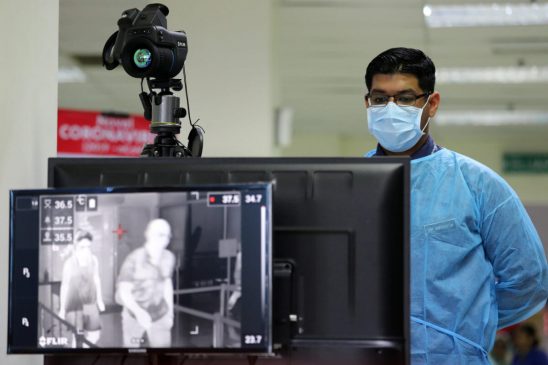- Official number of coronavirus cases in China is likely to spike in the coming days.
- A new category of diagnosis is now implemented by the government of China.
- Analysts believe real numbers are much higher than reported figures.
China’s surprise announcement of 15,000 new confirmed cases of coronavirus on February 12 is only the start of what’s to come. Experts anticipate the number of cases to be reported in the short-term to spike due to the introduction of a new category for diagnosing the virus.
Previously, the government of China only included individuals affected by coronavirus who were tested using nucleic acid kits in its official tally. Moving forward, people diagnosed with coronavirus through clinical tests will also be included in the official numbers.
There were already doubts about official coronavirus numbers
Prior to the shocking addition of 15,000 new coronavirus cases, there were concerns that the numbers coming from China were not reflective of actual figures the government has.
Wuhan has a population of 11 million, and Chongqing has more than 30 million people residing in the city. The lockdown of the two major cities alone has affected well more than 41 million people.
Considering how fast the virus spreads and the measures the Chinese government has taken to contain coronavirus, it is challenging for analysts to believe the numbers coming from China accurately represent the real data.
Throughout the past week, reports indicated that coronavirus can spread quickly from humans to humans, and through air.
Publications in Hong Kong reported that coronavirus may have spread through apartment pies in a local condominium, sparking fears towards the rate of dispersal of the virus.
China has confirmed 48,000 cases of coronavirus in the Hubei province. But, Hubei has a population of 58.5 million people. Given China’s extreme measures like restricting individuals from leaving their home, the number of cases seem ostensibly lower than anticipated.
No clear path to solution just yet
Scientists in China, Hong Kong, Australia, and a few other countries have been able to replicate coronavirus to better study it for diagnosis and to develop vaccines.
The China Global Television Network reported on February 13 that the transmission path of coronavirus remains virtually the same. It reported that virologists need more time for research to confirm fecal-oral transmission.
While some regions have seen the treatment of coronavirus through unorthodox methods like in Thailand, it remains uncertain as to what extent such methods can be used in a large setting.
The coronavirus outbreak has already started to cripple the Chinese economy, as millions of people are unable to work with home quarantine in place.
In some areas of China, households were asked to only select one person from the family to leave the house to purchase daily needs such as groceries and food.
Analysts expect confirmed cases of coronavirus to further increase as the outbreak reaches its peak. Models from institutions in the U.K. and Hong Kong forecast the virus can affect up to 500,000 people at its highest point.
This article was edited by Samburaj Das.




